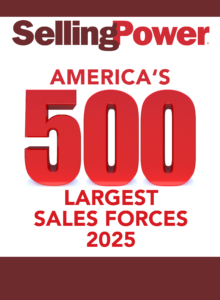Beyond CRM: Building the CRO’s Ultimate Sales Tech Stack

As the individual in charge of a company’s revenue streams, the chief revenue officer (CRO) plays a critical role in nearly all revenue-related functions, including sales, customer support and services, revenue management, and sometimes marketing. As part of this, they must also ensure their teams have the right resources and technology strategy to stay competitive, win deals, and maintain brand value.
However, with an ever-greater number of vendors providing technology solutions for sales and marketing teams, determining which products improve communication, customer interaction, and productivity can be overwhelming. For proof, just look at the latest Chief MarTech Marketing Technology Landscape infographic. It’s now crammed with 8,000 logos of vendors representing all the different segments of technology that CROs should consider. “Overwhelming” may indeed be an understatement.
Once a CRO has narrowed down the technologies needed, more hurdles are presented: the order in which they should be implemented and how they’ll be integrated into business operations. The entire process can be confounding. It’s no wonder the default approach historically has been to deploy a CRM and just be done with it.
In today’s dynamic selling and buying environment, however, effective CROs must think differently: Instead of focusing solely on selling and driving revenue, CROs must don their CIO hat and go beyond the belief that their sales tech stack begins and ends with a CRM. Rather, they must apply a strategic plan for implementation and deployment of a complete sales tech stack to drive success across the entire organization.
Building the Ideal Sales Tech Stack, Piece by Piece
The ideal sales tech stack comprises four cornerstones, each deployed in turn – with a CRM as the first. As discussed, while CROs should concern themselves with technology beyond a CRM, it’s still certainly a critical piece of the overall sales tech-stack puzzle – especially as a lead-management tool.
However, one thing most CRMs are unable to do well is forecasting. Sales forecasting provides insight on the level of sales a company should expect to reach monthly, as well as the potential for growth in specific segments and new market opportunities. Forecast numbers can help estimate expected sales volume so sales teams can adjust their goals. Forecasts also help shed light on customer engagement so marketing can adjust their campaigns accordingly. Simply put, a robust forecasting tool is an invaluable second cornerstone of any sales tech stack from a CRO’s perspective, as it helps provide a level of confidence in the company’s direction and momentum.
Once the first two cornerstones are in place, the third to be selected and deployed is a sales readiness tool. Different from sales enablement, sales readiness goes beyond simple training and content; rather, it encompasses a continuous and consistent process of creating and executing strategies that ensure the sales team’s effectiveness and preparedness to meet business objectives. Sales readiness ensures the sales team is aligned on sales processes and sales methodology – and then provides visibility into how it’s translating into sales forecasts.
Here’s why sales readiness is the important third cornerstone of the sales tech stack. Sales organizations can come up with their prospect list and the cadence by which they communicate with prospects. However, without a sales readiness tool that provides updated messaging and training on best practices – reinforced on a regular cadence – sales won’t be able to actually engage successfully with a prospect to produce the outcomes and results forecasted.
Ultimately, sales readiness is the underlying platform that gives CROs the ability to operationalize the things that must happen in order to consistently forecast moving forward – that is, get sales teams to be effective in the field and in front of customers and prospects. It directly impacts what a CRO cares about most: productivity and ramp time for their reps.
The fourth and final cornerstone depends on a CRO’s specific priority: Is it populating the top of the funnel? If so, they should choose a sales pipeline generation tool, which helps salespeople keep a regular cadence of engaging with their prospects or customers (through emails, phone calls, texts, LinkedIn messages, and so on) using an automated system. When integrated with a CRM, a sales pipeline generation tool can provide the insights CROs need to ensure their sales teams are on track with their daily, weekly, and monthly outreach targets.
A CRO whose priority is sales execution in deals might choose a conversation intelligence solution as their fourth cornerstone. Conversation intelligence is an AI-driven technology that analyzes speech or text to provide real-time actionable insights into conversations between salespeople and customers or prospects. It helps sales leaders and front-line managers understand where they need to quickly take action to help advance a deal.
Final Thoughts
With a bird’s-eye view of all revenue-generating activities within a company, the CRO holds one of the most important roles. As such, it’s critically important that CROs consider how to choose, deploy, and utilize new technology to improve the performance of their teams – which span sales, marketing, and even customer success. As we’ve discussed, the most important solutions fall into four categories. When selected and deployed strategically, they provide a solid foundation for creating better business outcomes and ensuring ongoing success.
Get our Enewsletter
Get the latest sales leadership insight, strategies, and best practices delivered weekly to your inbox.
Sign up NOW →